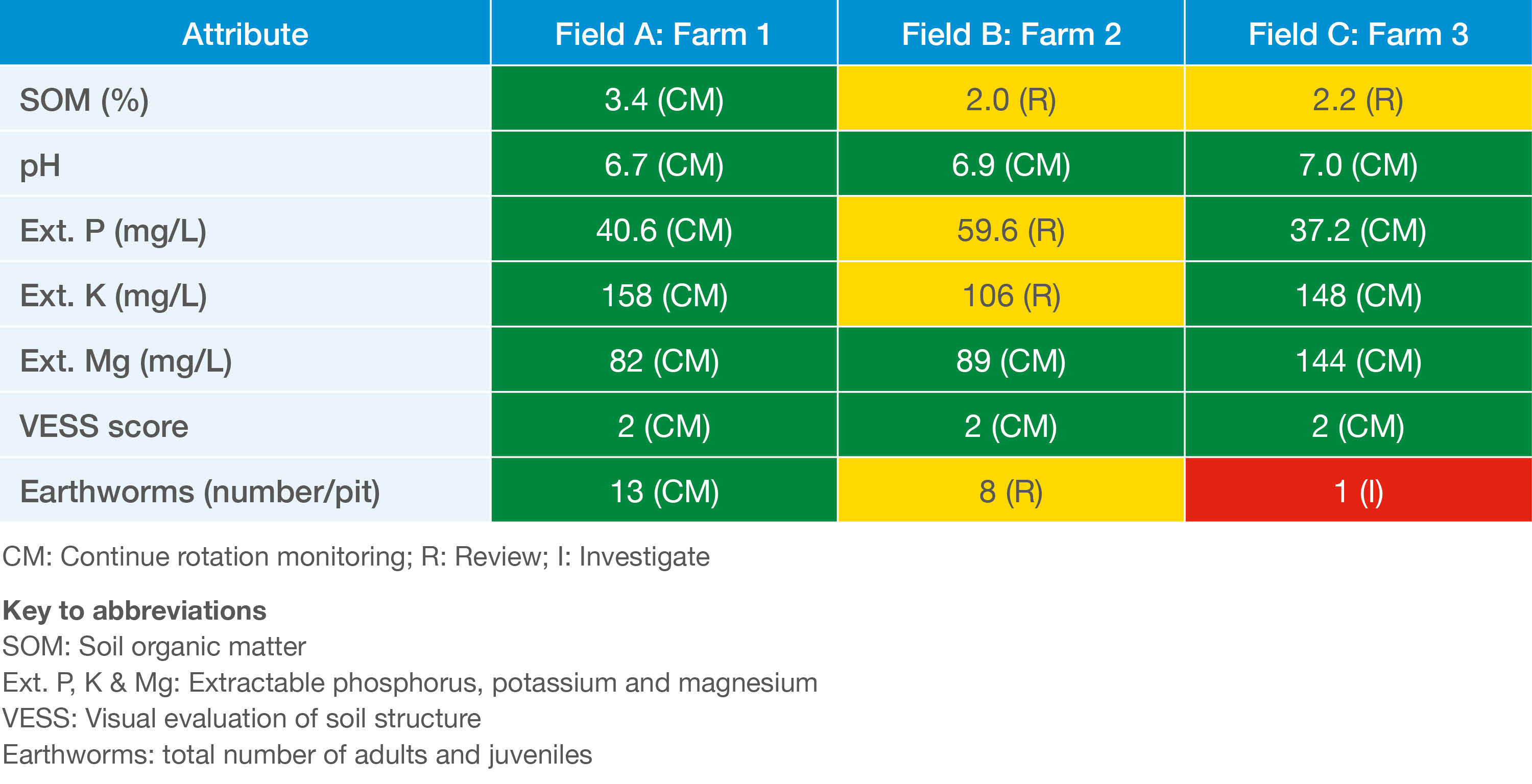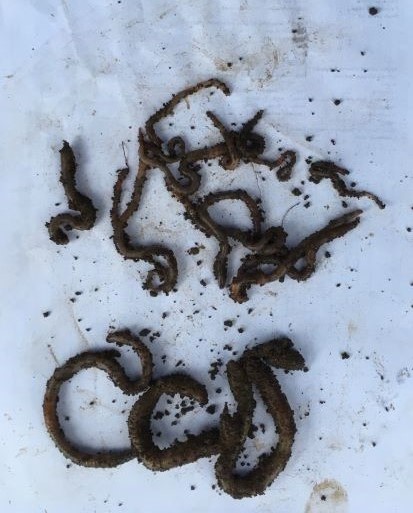- Home
- Knowledge library
- On-farm monitoring of soil health
On-farm monitoring of soil health
The soil health scorecard approach has been tested on-farm for soil properties where an evaluation framework is established.
Back to: Assessing soil health using an integrated approach
Access the soil health scorecard
Soil health assessments
During the on-farm tests soil health assessments were made:
- After harvest
- After the topsoil has wetted up in the autumn
- At least one month after any cultivations/moderate soil disturbance
Georeferenced sites within a field were used as sampling points. Measurements included:
- Visual evaluation of soil structure (VESS)
- Earthworm counts
- Laboratory analysis of phosphorus, potassium, magnesium, pH and soil organic matter
On-farm testing and validation
Eight farmer-research innovation groups around the UK reviewed the soil health scorecard approach and tested it on-farm. Groups were located in:
- North East Scotland (arable and mixed systems with root crops)
- North East England (arable and mixed systems)
- North West England (sheep and beef grazing system)
- East Yorkshire (arable and mixed systems with root crops)
- West (livestock, arable and field vegetable systems)
- South West (dairy and mixed systems)
- East Midlands (arable and mixed systems)
- East Anglia (arable systems with root crops and field vegetables)
Interpretation of the results
'Traffic light’ coding is used to identify properties where further follow-up investigation is needed to identify management options that could minimise any potential risks to crop productivity or the environment.
Example soil health scorecards sampled in November 2018 for fields on light soils of the same soil series in the mid-rainfall region (North East England, Midlands, Southern England)

Field A had higher soil organic matter because of previous long-term inputs of farmyard manure and composts. The current field vegetable system now includes cover crops to try to maintain the soil organic matter levels. The value of this added organic matter can still be seen in soil organic matter (%) and earthworm numbers.
Field B had potassium (K) reduce under the mixed cutting/grazing management in the three-year grass ley in this mixed system, because of the high offtakes of potassium in silage.
Field C had grown potatoes in 2017; the low earthworm numbers are probably because of the intensive cultivations associated with that crop.
Integrated approaches have beneficial effects
Earthworm populations from sites on medium soils with regular organic matter inputs (manures, crops residues) but contrasting tillage systems.
 Credit: Elizabeth Stockdale
Credit: Elizabeth Stockdale
 Credit: Elizabeth Stockdale
Credit: Elizabeth Stockdale
Conventional (left) and zero till (right), showing the beneficial effects of reduced tillage on the large deep-burrowing earthworm species.
Bringing the scorecard to life
Monitor Farm hosts have used the soil health scorecard approach to assess fields. Find out what some of them discovered.
Further information
Find out about the research behind the soil health scorecard
Watch a video introducing the soil health scorecard approach
Back to: Assessing soil health using an integrated approach
Video: Introduction to the Soil Biology and Soil Health Partnership
.jpg)
Topics:
Sectors:
Tags:


.JPG?v=638397938990000000)



